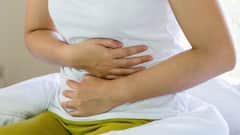Wine, Beer Or Rum — No Alcohol And No Amount Of It Is Safe, Can Cause Cancer: WHO
The research adds that alcohol consumption can cause at least seven types of cancer including the most common cancer types, such as bowel cancer and female breast cancer.

The World Health Organisation (WHO) has said in new research that ‘no amount of alcohol is safe for consumption’, adding that it causes at least seven types of cancer.
The UN body published a statement in The Lancet Public Health mentioning “when it comes to alcohol consumption, there is no safe amount that does not affect health.”
The research adds that alcohol consumption can cause at least seven types of cancer including the most common cancer types, such as bowel cancer and female breast cancer.
“Ethanol (alcohol) causes cancer through biological mechanisms as the compound breaks down in the body, which means that any beverage containing alcohol, regardless of its price and quality, poses a risk of developing cancer”, the research mentions.
Cancer Risk Increases With More Alcohol Consumption
The study finds that the risk of developing cancer increases as more alcohol is consumed. It said that latest available data indicate that half of all alcohol-attributable cancers in the WHO European Region are caused by “light” and “moderate” alcohol consumption, which is less than 1.5 litres of wine or less than 3.5 litres of beer or less than 450 millilitres of spirits per week.
“This drinking pattern is responsible for the majority of alcohol-attributable breast cancers in women, with the highest burden observed in countries of the European Union (EU)”, it adds.
The study reveals that in the EU, cancer is the leading cause of death – with a steadily increasing incidence rate – and the majority of all alcohol-attributable deaths are due to different types of cancers.
Danger Begins With First Drop
The WHO study states that currently available evidence cannot indicate the existence of a threshold at which the carcinogenic (potential to cause cancer) effects of alcohol “switch on” and start to manifest in the human body.
It further adds that no study is available that suggests that the potential beneficial effects of light and moderate drinking on cardiovascular diseases and type 2 diabetes outweigh the cancer risk associated it.
“We cannot talk about a so-called safe level of alcohol use. It doesn’t matter how much you drink – the risk to the drinker’s health starts from the first drop of any alcoholic beverage. The only thing that we can say for sure is that the more you drink, the more harmful it is – or, in other words, the less you drink, the safer it is,” explains Dr. Carina Ferreira-Borges, acting Unit Lead for Noncommunicable Disease Management and Regional Advisor for Alcohol and Illicit Drugs in the WHO Regional Office for Europe.
“Potential protective effects of alcohol consumption, suggested by some studies, are tightly connected with the comparison groups chosen and the statistical methods used, and may not consider other relevant factors”, clarifies Dr. Jürgen Rehm, member of the WHO Regional Director for Europe’s Advisory Council for Noncommunicable Diseases and Senior Scientist at the Institute for Mental Health Policy Research and the Campbell Family Mental Health Research Institute at the Centre for Addiction and Mental Health, Toronto, Canada.
The Real Big Picture
The research says that the WHO European Region has the highest alcohol consumption level and the highest proportion of drinkers in the population.
“Here, over 200 million people in the Region are at risk of developing alcohol-attributable cancer,” it says.
Highlighting the danger alcohol poses for vulnerable people, the study says, “Disadvantaged and vulnerable populations have higher rates of alcohol-related death and hospitalisation, as harms from a given amount and pattern of drinking are higher for poorer drinkers and their families than for richer drinkers in any given society.”
“So, when we talk about possible so-called safer levels of alcohol consumption or about its protective effects, we are ignoring the bigger picture of alcohol harm in our Region and the world. Although it is well established that alcohol can cause cancer, this fact is still not widely known to the public in most countries,” adds Dr. Ferreira-Borges
She said that there is a need for cancer-related health information messages on labels of alcoholic beverages, following the example of tobacco products.
“We need empowered and trained health professionals who would feel comfortable to inform their patients about alcohol and cancer risk, and we need overall wide awareness of this topic in countries and communities,” she said.
Check out below Health Tools-
Calculate Your Body Mass Index ( BMI )
Trending News
Top Headlines











































